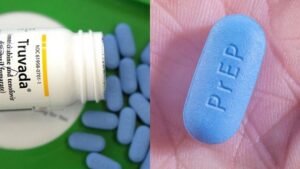What is PrEP and How Does It Work?
PrEP, or Pre-Exposure Prophylaxis, is a preventative medication for people who don’t have HIV. When taken consistently, it’s highly effective at stopping the virus from establishing a permanent infection in the body. The medication works by creating a powerful barrier of antiviral drugs in your bloodstream and tissues. If HIV enters your system, the medicine immediately blocks the virus from replicating, preventing it from taking hold.
The Science Behind PrEP
Think of PrEP as a shield. When you take it daily, it builds up in your system and is ready to act if you’re exposed to HIV. If the virus tries to enter your cells, PrEP’s active ingredients stop it from making copies of itself. This effectively neutralizes the threat, which is why clinical studies show that daily use can reduce the risk of sexual transmission by up to 99%. This makes PrEP a powerful tool in HIV prevention.
PrEP’s Impact on Public Health
Beyond individual protection, PrEP has a significant impact on public health. Communities with high rates of PrEP use have seen a sharp decline in new HIV diagnoses. Cities like San Francisco and London have demonstrated this, showing that widespread adoption of PrEP can dramatically slow the spread of the virus.
Key Benefits of PrEP:
- Breaks the Chain of Transmission: By protecting individuals, PrEP helps prevent the virus from spreading through at-risk communities.
- Empowers Individuals: PrEP gives people more control over their sexual health and peace of mind.
- Enhances Existing Prevention: It works alongside other prevention methods like condoms and regular testing to create a comprehensive safety plan.
Who Should Consider Taking PrEP?
You might be a good candidate for PrEP if you have any of the following risk factors:
- Having a partner who is HIV-positive.
- Engaging in sex with multiple partners without consistent condom use.
- Sharing needles or other equipment for injecting drugs.
- Living in an area with a high prevalence of HIV.
A healthcare provider can help you assess your personal risk and determine if PrEP is the right choice for you.
Getting Started with PrEP
Taking control of your health with PrEP is a straightforward process:
- Talk to a Doctor: Schedule an appointment to discuss your eligibility and risk factors.
- Get Tested: You must be confirmed as HIV-negative before starting PrEP.
- Check Your Health: Your doctor will perform a kidney function test to ensure you can take the medication safely.
- Start Taking It: Once prescribed, take PrEP every day to ensure maximum protection.
Dispelling Common Myths
Some people mistakenly believe that PrEP encourages risky behavior, but research consistently shows that users typically maintain or even improve their safe sex practices. The effectiveness of PrEP is grounded in solid medical science, not on assumptions about behavior.
The Future of HIV Prevention
PrEP is more than just a pill; it’s a game-changer in the fight against HIV. With increased awareness and accessibility, PrEP has the potential to transform public health and could lead to the virtual elimination of new HIV cases in many communities in the coming years.
The Bottom Line:
PrEP is a safe, effective, and scientifically proven way to prevent HIV. Understanding its benefits and impact can empower you to make informed decisions about your health and contribute to a healthier community.

